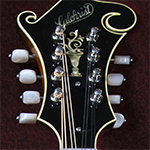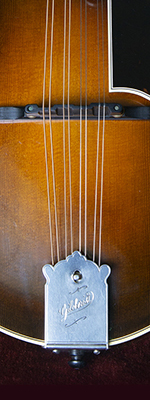Download the One-SheetJeff Midkiff: Music for Mandolin and String Quartet
As both a clarinetist and mandolinist, I have always performed in differing musical worlds. My experience as a clarinetist gave me an appreciation of the color, language and structure of the symphony. As a mandolinist who has always played with an improvisational approach, I knew in my heart that I could say something with it on a symphonic scale. Combining both worlds, the resulting work is my Concerto for Mandolin and Orchestra “From the Blue Ridge” (2011).
The First Mandolin Quintet is an arrangement of the Mandolin Concerto. The first of three movements (Allegro) begins with the mandolin on swirling sixteenth notes, setting the stage for drama and anticipation. The middle of the first movement moves from D-Minor to the relative key of B-Flat Major with a waltz-like dance, before returning to the main theme.
The lyrical and slow second movement draws on familiar bluegrass melodies. The song “Wildwood Flower” by the Carter Family, and Bill Monroe’s “Roanoke” are my thematic inspirations. It reflects my feelings of returning home to the mountains.
Each instrument has a virtuosic role to play, with the mandolin setting up the different rhythmic grooves.The third movement, “The Crooked Road,” is upbeat, improvisational and dynamic. Drawing from jazz and bluegrass themes, it expresses a series of ideas in a “controlled jam session.” Each instrument has a virtuosic role to play, with the mandolin setting up the different rhythmic grooves.
The Second Quintet is subtitled “Gypsy.” The work is in three movements and pulls from my impressions of folk and gypsy styles. The first movement begins with the violins introducing a chromatic melody that descends over a drone in the viola and cello. This melody is the “gypsy” motif that permeates and unifies the entire work. The marking “Lentamente quasi cadenza” (slow, like a cadenza) establishes the improvisational character of the piece. The music then takes off in a fiery tour de force with virtuosic passages.
The second movement marked “Lonely” has repeated pairs of notes in the mandolin that create a feeling of time passing. After the cello introduces the melancholy main theme, the first violin transforms it into a gypsy fiddler’s wild improvisation. A more hopeful sounding A-major transitional melody harkens in a humorous scherzo with the mandolin soloing over pizzicato strings.
The main theme returns in the violins in the key of C major. The music ends softly with the transitional melody preparing the final movement without pause.The music is rhythmic, exciting, and a culmination of a variety of infl uences. The third movement’s swift, syncopated introduction quickly transforms itself into a bluegrass-inspired fiddle tune. The music is rhythmic, exciting, and a culmination of a variety of infl uences. This improvisational style seamlessly transforms into a new gypsy section and after a brief reminiscence of the slow movement main theme, the viola begins a fugue based on the original gypsy motif. The Quintet ends in a thrilling return of the fiddle tune.
—Jeff Midkiff











